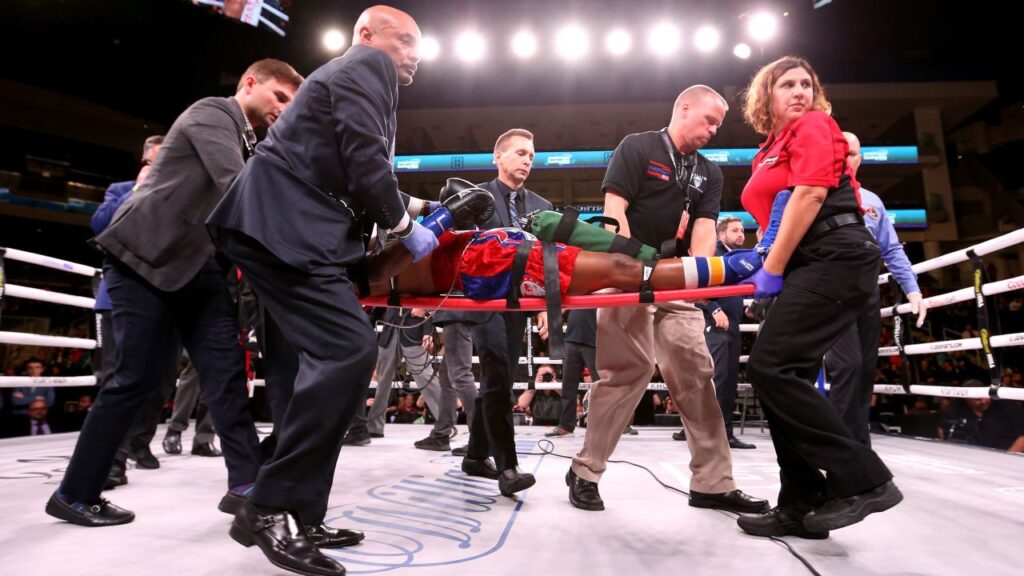It’s a sport which can be a matter of life and death. Between 1890 and 2011, it’s estimated that 1,604 boxers died as a direct result of injuries sustained in the ring, according to a survey carried out Manuel Velazquez. That is an average of 13 deaths a year.
The 27-year-old American boxer Patrick Day, who died four days after suffering head injuries in a fight with his compatriot, Charles Conwell, is the sport’s latest fatality.
Day is boxing’s fourth recorded death in 2019 that has come as a direct consequence of injuries sustained in the ring.
In September, 21-year-old Bulgarian Boris Stanchov died while fighting under his cousin’s license in Albania.
In July, two boxers died just days between each other. Russian Maxim Dadashev, 28, died on July 23, four days after his light welterweight fight in Maryland and Hugo Alfredo Santillán, a 23-year-old Argentine, died on July 25, five days after collapsing at the end of a lightweight fight in Buenos Aires.
As well as those four fatalities, five other boxers were rushed to hospital as a result of injuries suffered in the ring and had to undergo surgery to remove blood clots in their brains, a BoxRec spokeswoman told CNN.
The deaths and serious injuries that occur in boxing, often lead to clamors for the sport to be banned.
“Boxing is certainly an easy and obvious target, and of course the criticism is understandable, if not completely fair,” a WBF spokesman told CNN Sport in response to those calls.
“Boxing does so much good for young people, keeps them off the streets, away from drugs, teachs them discipline, self-confidence, that the good by far outweighs the bad.”
READ: The world’s first transgender professional boxer is now the face of Everlast
According to Joseph Svinth’s 2011 study in the Journal of Combative Sport’s Manuel Velazquez Collection, deaths in boxing have steadily decreased.
At its peak, there were 233 boxing-related deaths in the 1920s, while there were just 103 in the 2000s.
There was a steep decline in the number of fatalities following the death of South Korean lightweight Duk-koo Kim, who died in 1983 four days after being knocked out by Ray “Boom Boom” Mancini in Las Vegas.
Subsequent championship bouts were reduced from 15 to 12 rounds in an attempt to limit long-term head injuries potentially suffered as a result of exhaustion.
A 2009 American Medical Association report estimated that there is a fatality rate in boxing of 0.13 deaths per 1,000 participants per year.
“This fatality rate is lower than or similar to the rates of other high-risk sports, such as college football, motorcycle racing, scuba diving, mountaineering, hang gliding, sky diving, and horse racing,” said the AMA report.
“Fatalities occur less often among amateur than professional boxers, averaging at about three deaths per year compared with 9–10 deaths per year from professional boxing.”
Head injuries occur in other sports like NFL, soccer, rugby, cycling, but what makes boxing so different is that boxers are aiming to knock out their opponents.
However, mountaineering would appear to be more dangerous.
Experienced mountain chronicler Alan Arnette calculated in June that there had been 379 summits of K2 and 85 deaths since records began – a rate of 22% compared to 3% on Everest. For every four climbers that have scaled the mountain, one has died trying.
A number of positive role models in boxing at the moment also provide a reason for the sport to not be banned, despite its lethal intent, according to the WBF.


